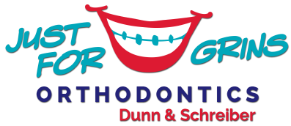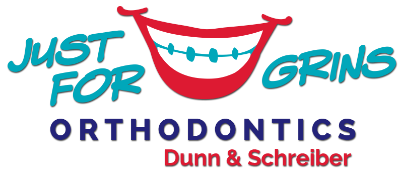Today’s blog is specifically about an orthodontic problem known as crossbite, but we begin by sharing that the American Association of Orthodontics recommends children meet with an orthodontic specialist no later than age 7. This can identify crossbite and other developmental issues of the jaw and teeth. An early evaluation is free at Just for Grins Orthodontics!
What is a Crossbite?
A crossbite occurs when the upper jaw is too narrow and sits inside the lower jaw when the mouth is closed. A crossbite is considered a malocclusion, or a bad bite and should be corrected. This can take several forms and all can be corrected by an orthodontist. Only 9% or less of cases get resolved on their own. Crossbite can not only make your child feel self-conscious, but can make eating uncomfortable, and can lead to temporomandibular disorder (TMD) problems – that cause pain in the jaw joint (TMJ) and in the muscles that control jaw movement.
Types of Crossbite
The two types of crossbites are anterior and posterior. An anterior crossbite occurs in 4%-5% of children and occurs when a front tooth or teeth sits inside the lower jaw. The posterior version happens in the back, but is more common at up to 16% of children.
Causes of Crossbite
Crossbite in children can occur from a variety of factors including genetics. Crossbite is an inherited condition for some. For others, prolonged use of a pacifier or thumb sucking, delayed loss of baby teeth, and oversized tonsils or adenoids can also contribute to the development of crossbite.
Correcting Crossbite
When considering correcting crossbite, earlier is better. At age seven to ten, for example, while the jaw is still growing, crossbite can be corrected with tools such as braces, palatal expanders, or face masks. If not corrected while the jaw is still growing, surgery is often necessary. We include more detail on palatal expanders on our website.
As we mentioned, various orthodontic treatments are available to help correct crossbite and other alignment issues — and the sooner they’re taken care of, the less damage they may cause. As these potential problems aren’t always easy to recognize, give your child the best opportunity for a healthy and beautiful smile and bring your child in for a free, early orthodontic screening by age seven!



